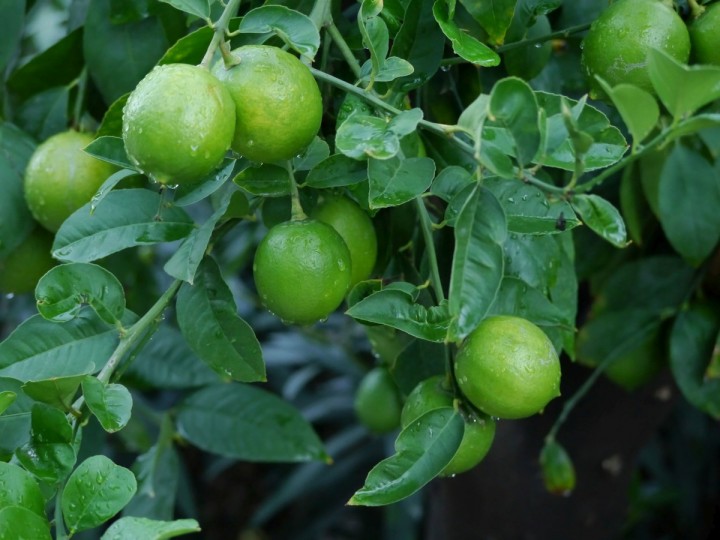
About Mexican lime(Rutaceae)
The Mexican lime fruit Small, bushy, evergreen tree, 3-5 m (10–16 ft) tall, with dense foliage and sharp spines on branches and trunk. Leaves dark green, leathery, aromatic when crushed, elliptic to ovate, 5–7 cm (2– 2.75 in) long, with a minutely serrated edge and a winged petiole. Flowers first pinkish then white, singly or in small racemes, 2–2.5 cm (0.8–1 in) in diameter with 4–6 petals and yellow anthers. Fruits globose, sometimes slightly pointed at apex, light green turning pale yellow when fully ripe. Pulp greenish-yellow, aromatic, juicy, and very acidic, usually with several small white seeds.
Native to Indomalayan region. The plant, which was virtually unknown in Europe prior to 1300, was probably carried by Crusaders from the Middle East through North Africa to the Mediterranean and Western Europe. In the sixteenth century, seeds were taken by Spaniards and Portuguese sailors to their colonies in the Americas. Lime trees were reportedly growing in Haiti around 1520. The Mexican lime, which thrives in humid, warm climates, is grown in most tropical and some subtropical countries around the world.
Lime juice is used to flavor fruit juices and to prepare alcoholic drinks such as caipirinha, a well-known Brazilian cocktail made from cane sugar, lime juice, cane liquor, and crushed ice. Wedges of lime and the flavorful juice are used to garnish and season a great variety of fish and seafood dishes. The juice is often employed instead of vinegar in the preparation of salad dressings and sauces. In Central and South America, lime juice is used to marinate diced fish filets to prepare a popular dish called ceviche. In India, green fruits are pickled, and in Malaysia they are preserved in syrup. Lime juice is boiled with sugar to form a syrup used in pie and cake fillings. Limes are a common ingredient in Thai, Mexican, and Vietnamese dishes. The oil obtained from the peel is used to flavor candies, soft drinks, ice cream, and many other food products. It is also utilized in the perfume industry and in a variety of other cosmetic products. Mexican lime fruit plants in Kerala is also availabe now.
.